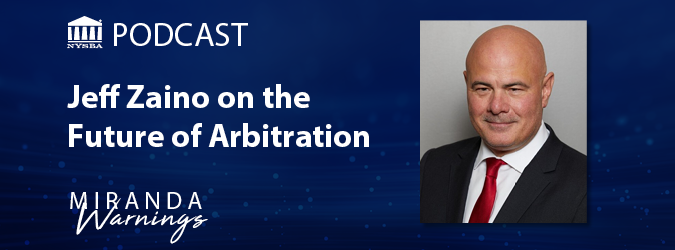Enforcing Mediated Settlement Agreements, or, When Is a Deal Really a Deal: An Analysis of Murphy v. Institute of International Education
8.12.2022
After a long day of mediation, success – the parties have reached agreement to settle their dispute. Together, counsel prepare a mediation settlement agreement incorporating material terms, and the parties, counsel and mediator sign it, understanding that a more comprehensive agreement will be prepared. Several days later, having had second thoughts, the plaintiff declares she does not wish to settle after all.
Is the mediation agreement enforceable by the defendant? Does a party’s change of heart require deference, where the more detailed settlement agreement had not yet been finalized and signed? Should it matter that plaintiff is pro se and contends that she signed the mediation agreement under duress caused by her court-appointed mediation counsel and the mediator? The U.S. Court of Appeals for the Second Circuit recently grappled with these issues in Murphy v. Institute of International Education,[1] an opinion authored by Hon. Richard J. Sullivan that is instructive for counsel, parties and mediators alike.
The Dispute: Mediation, Settlement and Second Thoughts
In Feb. 2019, Philana Murphy, acting pro se, sued her employer, Institute for International Education, alleging unlawful employment discrimination in violation of federal, state and local employment laws. U.S. District Judge Andrew L. Carter Jr. referred the case to the Southern District of New York’s mediation program and appointed pro bono counsel to represent plaintiff in the mediation.[2]
At the conclusion of the mediation, the parties advised the mediator that they had settled the dispute. Using a form supplied by the S.D.N.Y. Mediation Program, they prepared a document setting forth the case caption and titled “Mediation Agreement,” beginning with the pre-printed sentence: “IT IS HEREBY AGREED by and between the parties and/or their respective counsel that, following mediation, agreement has been reached on all issues.” Below that, the parties handwrote, “In exchange for a discontinuance with prejudice and a general release of all claims,” defendant will furnish to plaintiff one year’s salary, two months COBRA premium contributions and regular pay and benefits through a set date. They next wrote, “A full settlement agreement w/applicable releases will follow.” The parties, counsel and mediator all signed the mediation agreement, and the district court thereafter entered an order dismissing the case.[3]
Following the mediation, counsel negotiated a draft of a more comprehensive settlement agreement that included the institute’s disclaimer of any liability and acknowledged its obligation to provide a neutral reference, and also included Murphy’s obligation to keep the terms confidential, to not disparage defendant, to not seek employment with defendant and to not assist anyone else in pressing claims against defendant. The draft “full agreement” also included general provisions such as contract integration and interpretation.[4]
Three days after she signed the mediation agreement, Murphy contacted the district court and expressed a desire to revoke it. She was told to send an email to the court, which she did three days later. Plaintiff’s email stated that she was nervous and confused during the mediation and had told her attorney that she was not comfortable signing; that her attorney advised that mediation “was the nicer portion of [her] lawsuit;” and that the mediator said that if plaintiff continued, she “would be stuck in a room filled with white men that would question every aspect of [her] life for hours.”[5] Murphy called her mother, who advised her not to sign, and she took 10 minutes outside the room to “clear her head.” Murphy stated that she then asked to have until Monday to think over the mediation agreement but was told “no” and that the mediation agreement included the most compensation she would ever receive. Murphy averred that she ultimately signed the mediation agreement because she “was so sad and felt [she] had no choice but to sign.”[6]
The Institute Seeks To Enforce
After Murphy refused to sign the “full agreement,” the institute filed a motion to enforce the mediation agreement itself. Murphy, with new counsel, opposed. The parties agreed that whether the mediation agreement was enforceable was governed by the four-factor test set forth in 1985 by the Second Circuit in Winston v. Mediafare Entertainment Corp.:
(1) whether there has been an express reservation of the right not to be bound in the absence of a writing; (2) whether there has been partial performance of the contract; (3) whether all of the terms of the alleged contract have been agreed upon; and (4) whether the agreement at issue is the type of contract that is usually committed to writing.[7]
The district court referred the motion to a magistrate judge, who issued a Report & Recommendation that the mediation agreement be enforced. The district court agreed, overruling Murphy’s objections and concluding that “[c]onsidering all of the Winston factors, . . . the parties sufficiently indicated their intent to be bound by the signed Mediation Agreement, and, accordingly, that the Mediation Agreement is enforceable.”[8] The district court (as had the R&R) also rejected plaintiff’s additional argument that the mediation agreement not be enforced because she was “demeaned, disrespected and pressured during the mediation” and signed the agreement under duress.[9] The district court entered judgment in the institute’s favor, and Murphy appealed.
The Second Circuit’s Framework for Analysis
In Murphy, the Second Circuit began by reminding, “It is well established that settlement agreements are contracts and must therefore be construed according to general principles of contract law.”[10] The court then looked to the framework first posited by then-District Judge Leval in 1987 in Teachers Insurance and Annuity Assn. of America v. Tribune Co.,[11] and which the Second Circuit has applied in the decades since, identifying two kinds of preliminary contracts that New York law recognizes. The first (Type I) occurs “when the parties have reached complete agreement (including the agreement to be bound) on all the issues perceived to require negotiation,” and is “preliminary only in the sense that the parties desire a more elaborate formalization of the agreement;” and the second (Type II) is one that “expresses mutual commitment to a contract on agreed major terms, while recognizing the existence of open terms that remain to be negotiated.”[12]
The Second Circuit noted that it previously had referred to the four-factor Winston test (on which the district court in Murphy exclusively focused) when determining whether something constitutes a Type I agreement and a modified five-factor version of that test when considering whether something is a Type II agreement.[13] But the court acknowledged that such factors “do not provide us with a talismanic scorecard” and, while helpful to consider, “the ultimate issue, as always, is the intent of the parties: whether the parties intended to be bound, and if so, to what extent.”[14]
Murphy presented the Second Circuit with an unusual opportunity because, unlike in Winston, where the key issue was whether the parties intended to be bound, in Murphy the court was “confronted with a written agreement that has been executed” and thus, “the question instead is what kind of agreement did the parties make.”[15] As the panel observed, “While we have a body of law distinguishing non-binding agreements from Type I agreements and non-binding agreements from Type II agreements, we have had fewer occasions to explain how courts should distinguish between Type I and II agreements when confronted with an agreement that is clearly binding in some sense.”[16]
A ‘Paradigmatic Type I Agreement’
With the table thus set, the court in Murphy focused on the text of the mediation agreement, “which is the most important consideration when determining how the parties intended to be bound.”[17] The court observed that, here, “the mediation agreement clearly states that ‘agreement has been reached on all issues,’ which is strong language indicating this is a Type I agreement,” no less so because the language was pre-printed; this, the court found, was in contrast to a case in which the language of the agreement merely committed the parties to “work together in accordance with the terms and conditions outlined in” the agreement, “which would be a Type II agreement to continue negotiating.”[18]
In addition to finding that the language of the mediation agreement was “unequivocal,” the court determined that the language “reflects that the terms included in the agreement were the material terms” and that, “[a]lthough the mediation agreement clearly contemplates a final contract that ‘would include additional boilerplate,’ that does not prevent us from finding a Type I agreement so long as the parties ‘foresaw no disputes relating to the boilerplate.’”[19] Indeed, the court noted, a Type I agreement, “by definition, contemplates a future formalization that will likely include some additional terms,” but “trivial open issues will not prevent the court from upholding a Type I agreement.[20] While the draft “full agreement” in Murphy contained some terms not in the mediation agreement, including a confidentiality provision identified as material, there was no evidence to suggest that the parties considered those terms “open issues in need of negotiation at the time the parties entered into the mediation agreement, which is the proper frame of reference.”[21]
Notably, the court found that the “context of the district court’s mediation program further confirms that this was a Type I agreement.”[22] As the court recounted, “everyone in the mediation understood the executed mediation agreement to bind the parties to its terms and not merely to set a framework for future negotiation,” and the parties, their attorneys and the mediator all signed it; moreover, Murphy, by her own admission, “agonized over the mediation agreement, taking time to clear her head and call her mother before signing it, indicating that she thought the mediation agreement would bind her and conclude the litigation.”[23] Thus, “there can be no doubt” that the parties intended to be bound, and their anticipation of “lawyer’s embellishments” in a final formal agreement “in no way makes the mediation agreement unenforceable.”[24] Indeed, the court observed, “To hold otherwise would defeat the very purpose of the mediation program and render the execution of mediation agreements a hollow and pointless exercise.”[25]
Plaintiff Did Not Sign the Mediation Agreement Under Duress
As she had argued in the district court, Murphy also contended on appeal that, due to pressure exerted by the mediator and her attorney, the mediation agreement was voidable because she signed it under duress. The Second Circuit noted that “repudiation of an agreement on the ground that it was procured by duress requires a showing of both a wrongful threat and the effect of precluding the exercise of free will.”[26] The court rejected plaintiff’s argument, finding “no evidence to support the contention that Murphy’s free will was overcome” and that, to the contrary, Murphy “was given the opportunity to step outside of the room and collect herself, and she was given the opportunity to call her mother to discuss her options.”[27] For that matter, although her attorney and the mediator “urged her to sign the mediation agreement, no one prevented her from leaving the mediation or continuing with the litigation.”[28]
Moreover, the panel agreed with other courts and the Restatement (Second) of Contracts that “a party seeking to void an agreement based on duress must show that the alleged coercive behavior originated with the defendant or was known to the defendant at the time the agreement was made.”[29] The court observed that Murphy had not described any coercive behavior by the institute during the mediation or alleged the institute’s awareness of any such behavior; rather, insofar as Murphy was put under any pressure to sign the mediation agreement, “that pressure came from her counsel and the mediator, not the Institute or its attorneys.”[30]
Lessons for Enforceability
In Murphy, the Second Circuit provided welcome guidance regarding enforceability of mediated settlement agreements and the distinction for that purpose between “Type I” and “Type II” agreements. In affirming the judgment enforcing what it determined was “a paradigmatic Type I agreement, binding with respect to its terms despite contemplating a later formalization,” the Second Circuit provided a significant guidepost for counsel, parties and mediators: “In all but the most unusual circumstances, mediation agreements that include express language indicating that the parties have reached agreement on all material terms are presumptively Type I agreements – unless the parties explicitly reserve the right not to be bound by the mediation agreement’s terms until a final agreement is drafted and signed.”[31]
For all participants in the process, Murphy underscores the importance, at the end of a long day of mediation, of memorializing the parties’ intent through clear and precise drafting of a mediation settlement agreement embodying all material settlement terms, without explicitly stating that they will not to be bound (Type I), unless it is the parties’ intention not to be bound pending execution of a more formal or extensive agreement (Type II), and, if so, to so state. And, even though the district and appellate courts rejected plaintiff’s alternative argument that she signed the mediation agreement under duress, the litigation serves to remind all participants of the core mediation principle of party self-determination, in practice and appearance.
___________
Steven M. Bierman is an independent mediator, arbitrator, and dispute resolution advisor, and founder of Bierman ADR LLC. He is a fellow of the Chartered Institute of Arbitrators and accredited as a mediator by the Centre for Effective Dispute Resolution. He also serves on multiple ADR rosters, including the Mediation Panels for the U.S. District Courts for the Southern and Eastern Districts of New York and for the New York State Supreme Court (Commercial Division). Previously, he was a partner at Sidley Austin, where he headed or co-headed the New York Litigation Group for 25 years and was co-leader of its global commercial litigation and disputes practice. This article appears in a forthcoming issue of Dispute Resolution Lawyer, a publication of the Dispute Resolution Section. For more information, please see NYSBA.ORG/DISPUTE.
[1] 32 F.4th 146 (2d Cir. 2022).
[2] Id. at 149.
[3] Id.
[4] Id. at 149–50.
[5] Id. at 150.
[6] Id.
[7] Winston v. Mediafare Entertainment Corp., 777 F.2d, 78–80 (2d Cir. 1985).
[8] Murphy v. Institute of International Education, No. 19-cv-1528, 2020 WL 5658628, at *4 (S.D.N.Y., Sept. 23, 2020).
[9] Id.
[10] Murphy v. Institute of International Education, 32 F.4th 146, 150 (2d Cir. 2022), quoting Collins v. Harrison-Bode, 303 F.3d 429, 433 (2d Cir. 2002).
[11] 670 F. Supp. 491 (S.D.N.Y. 1987).
[12] Murphy, 32 F.4th 146, 150–51 (2d Cir. 2022); see Vacold LLC v. Cerami, 545 F.3d 114, 124–29 (2d Cir. 2008); Arcadian Phosphates, Inc. v. Arcadian Corp., 884 F.2d 69, 71-73 (2d Cir. 1989).
[13] Murphy, 32 F.4th at 151.
[14] Id., quoting Vacold, 545 F.3d at 125.
[15] Id.
[16] Id.
[17] Id. at 152.
[18] Id.
[19] Id., quoting Vacold, 545 F.3d at 129.
[20] Id. at 152.
[21] Id.
[22] Id.
[23] Id.
[24] Id.
[25] Id.
[26] Id., quoting from United States v. Twenty Miljam-350 IED Jammers, 669 F.3d 78, 88 (2d Cir. 2011) (internal quotation marks omitted).
[27] Id. at 153.
[28] Id.
[29] Id., citing Evans v. Waldorf-Astoria Corp., 877 F. Supp. 911, 914 (E.D.N.Y. 1993), aff’d, 33 F.3d 49 (2d Cir. 1994), and Restatement (Second) of Contracts, § 175 (Am. Law Inst. 1981).
[30] Id. at 154.
[31] Id. at 153.






